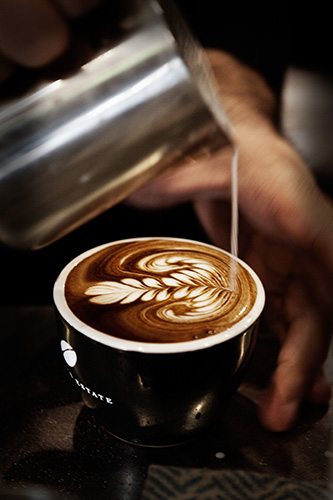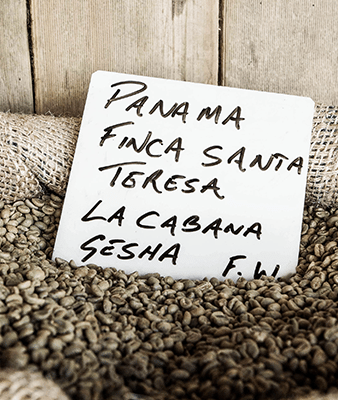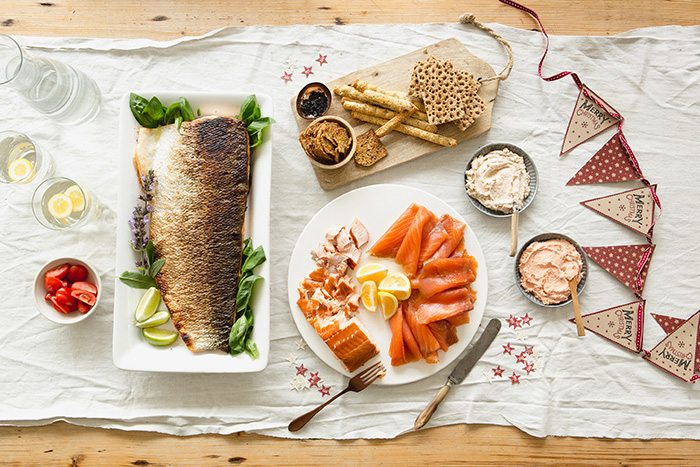Recently inducted into the Hall of Fame at the 2014 Cafe Guide Awards, Smith talks to MiNDFOOD about building relationships with farmers around the world, how he prefers his coffee and the crop-to-cup process.
Congratulations on being inducted into the Hall of Fame at the recent SMH Café Guide Awards! What did this mean for you?
Being inducted into the Hall of Fame was a massive compliment, and a total surprise. It was so nice to be recognised for all of the hard work and good times I’ve had by doing what I love.
You first started Toby’s Estate over 12 years ago, back when Sydney’s coffee culture was in the midst of a ‘revolution’ (which I believe you were instrumental in). What do you recall about the coffee scene back then?
Back then the coffee scene revolved around imported Italian coffees and a few larger commercial roasters. Today the scene is all about local and national specialty roasters who deal in higher quality Arabica blends.
Why do you think Australians are such coffee enthusiasts?
I think it is ingrained in our culture thanks to the Italians and other Europeans who came here with their traditional coffee culture. I think we have really taken the bull by the horns and embraced coffee as part of our social fabric, as Australians really love to socialise around food, coffee, wine and beer which suits our relaxed life style.
We’ve also become more experimental with alternative brewing techniques (cold drip/brew etc). Are there any we haven’t heard of that might take off soon?
I think we’ll be seeing a lot more of the Steam Punk. While cold drip and pour-over are simple techniques which work exceptionally well, we’ll start to see the Steam Punk in a more commercial environment thanks to technology advances. The benefits of the Steam Punk is that it allows you to be really specific when it comes to profiling and to control elements such as temperature. There is a greater level of automation with the Steam Punk, so look out for it commercially. But for home you can’t beat the Chemex and the Aeropress as it is plastic and travels well.
How do you enjoy your coffee?
I start off with a Chemex in the morning, then a piccolo latte, followed by an espresso, then another espresso, then a long black and then a pour over Chemex. In summer I love a cold brew.
Tell me about your work with coffee farmers around the world. How do you come to discover these and how important is it to build these relationships?
We love to celebrate our farmer relations and all of the hard work and love they put into making their beans unique and of a high standard. We also work with them in terms of what we want as roasters and what we think the consumer wants. We also work with them to help with charity work by contributing to their schools or equipment.
In the old days (before the internet, mobile phones etc) we discovered them by literally going out on the road and rocking up to farms and finding the coffee that way. Now the world has changed, as there are coffee shows, farmers have websites and mobile phones and they are ringing us directly.
The relationships between the roaster and farmer are now a much stronger. So it is really important to build these relationships so we can tell their stories to our consumer to deepen their understanding of where their coffee originates from.
Can you explain for us the Toby’s Estate crop to cup process – what is involved?
Apart from our relationship with multiple farmers, I have a close relationship with our own Toby’s Estate Farm, Finca Santa Teresa in Panama. I work really closely with the roasting team to develop a really specific profile from the beans grown on our farm. La Trinidad is the best example of what we have created from our Toby’s Estate Farm.
Our roasters have a great relationship with the farm. We send one person from the roasting team each year to travel to our farm to help with the whole process – the processing, the blending of the lots and the making of La Trinidad. The next
The next step is the planting of different varieties of different coffee trees.
Is travelling to unearth new coffee plantations and opportunities still a big part of your job?
Yes, it’s a huge part. I work closely with Paul Golding, our Green Bean Buyer, and our roasters. We are very fortunate to have business in North and Central America, Singapore and across Australia and we have people on the ground throughout each of these regions.
Otherwise Paul and I share the travel to origins, and we aim to be the first to the origin as it really is ‘first in, first served’ when it comes to securing the best beans.
In your opinion, where do the best beans come from?
At the moment I am really enjoying the Gesha varieties from Panama, but I also have a weakness for Ethiopian beans.
There’s a lot more competition now in the local market, with a lot of boutique roasters popping up over the last 5-10 years. How does Toby’s Estate stay ahead of the pack and relevant today?
We focus on buying seasonally fresh beans of the highest quality. We have a dedicated Procurement team to source our green coffee beans and we get to the source early for the best selection of coffees. We also have a large focus on quality control and assurance in our roasting facility, which sees our QA team perform multiple cuppings resulting in a consistent and high quality fresh product. I think what makes us truly unique is our farm in Panama; Finca Santa Teresa. Having our own plantation gives us great control over our own product and over our own blends.
For more details, visit www.tobysestate.com.au.



![DGB-CRJ[1]](https://www.mindfood.com/wp-content/uploads/2014/07/DGB-CRJ1.jpg)



